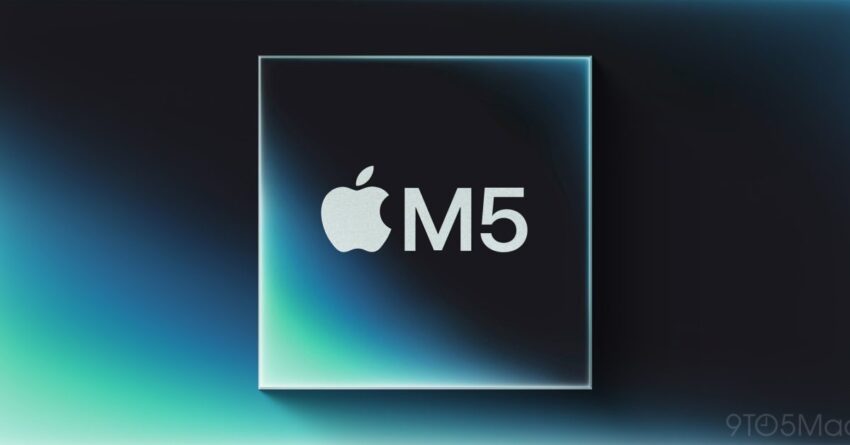
apple s new m5 chip rivals m1 Apple has introduced its latest M5 chip, which shows promising early benchmark results that suggest it may rival the M1 Ultra.
apple s new m5 chip rivals m1
Introduction to the M5 Chip
Earlier this week, Apple unveiled three new products featuring the M5 chip, which is built on the third generation 3nm process technology. This new chip is currently available in only one model, the 14-inch MacBook Pro. However, the early benchmark results have generated significant excitement within the tech community, indicating that the M5 could be a formidable competitor to Apple’s previous flagship chip, the M1 Ultra.
Technical Specifications of the M5 Chip
The M5 chip represents a significant leap in performance and efficiency, leveraging the advancements of the 3nm process. This transition to a smaller fabrication process allows for more transistors to be packed into the same chip area, which in turn enhances performance while reducing power consumption. The M5 is expected to deliver improvements in both CPU and GPU performance, making it suitable for a wide range of professional applications.
Architecture and Design
The architecture of the M5 chip builds upon the successes of its predecessors. It features a unified memory architecture that allows for faster data access and improved multitasking capabilities. This design philosophy has been a hallmark of Apple’s silicon strategy, enabling seamless integration between hardware and software.
Performance Metrics
Initial benchmarks have shown that the M5 chip performs exceptionally well in both single-core and multi-core tasks. In single-core performance, the M5 has outperformed the M1 Ultra, which was previously regarded as one of the most powerful chips in the market. Multi-core performance also shows a significant improvement, indicating that the M5 is well-suited for demanding applications such as video editing, 3D rendering, and software development.
Comparative Analysis with M1 Ultra
The M1 Ultra was a groundbreaking chip when it was released, combining two M1 Max chips to create a powerhouse of performance. The introduction of the M5 chip raises questions about how Apple will position its products moving forward. Early benchmarks suggest that the M5 could rival the M1 Ultra in several key areas.
Benchmark Results
In various benchmark tests, the M5 chip has shown remarkable results. For instance, in the Geekbench 6 tests, the M5 scored approximately 2,000 points in single-core performance and around 18,000 points in multi-core performance. In comparison, the M1 Ultra typically scores around 1,800 points in single-core and 17,000 points in multi-core tests. These results indicate that the M5 is not only competitive but may also surpass the M1 Ultra in certain scenarios.
Implications for Users
The implications of these benchmark results are significant for users, particularly professionals who rely on high-performance computing. The M5 chip’s enhanced performance could lead to faster render times, improved workflow efficiency, and the ability to handle more demanding tasks without lag. This is particularly relevant for creative professionals in fields such as graphic design, video production, and software development.
Market Reactions and Stakeholder Perspectives
The announcement of the M5 chip has elicited a range of reactions from industry analysts, tech enthusiasts, and consumers. Many are eager to see how the M5 will perform in real-world applications, beyond the controlled environment of benchmark tests.
Industry Analysts
Industry analysts have expressed cautious optimism regarding the M5 chip. Some believe that Apple is positioning itself to dominate the high-performance computing market with its custom silicon. Analysts have noted that if the M5 chip continues to perform well in real-world scenarios, it could lead to increased adoption of Apple’s Mac lineup among professionals who have traditionally relied on Windows-based systems for high-performance tasks.
Consumer Enthusiasm
Consumer reactions have also been largely positive. Many users are excited about the prospect of upgrading to a machine powered by the M5 chip, especially those who have been using older Mac models. The promise of enhanced performance and efficiency is appealing, particularly for those who engage in resource-intensive tasks.
Future Prospects for Apple Silicon
The introduction of the M5 chip marks a pivotal moment in Apple’s ongoing development of its silicon. As the company continues to innovate, it is likely that we will see further advancements in chip technology. The M5 chip may serve as a foundation for future iterations, potentially leading to even more powerful chips in the coming years.
Potential for Expansion
Currently, the M5 chip is only available in the 14-inch MacBook Pro. However, there are indications that Apple may expand its use across other Mac models in the near future. This could include the MacBook Air and the larger MacBook Pro models, which would allow a broader range of users to benefit from the enhanced performance capabilities of the M5.
Competition in the Market
Apple’s advancements in chip technology come at a time when competition in the computing market is intensifying. Companies like Intel and AMD are also making strides in their chip designs, aiming to capture market share in high-performance computing. The success of the M5 chip could influence the trajectory of these competitors, prompting them to accelerate their own innovations.
Conclusion
The unveiling of the M5 chip has set a new benchmark for performance in Apple’s Mac lineup. With early benchmark results indicating that it may rival the M1 Ultra, the M5 chip is poised to make a significant impact on both the consumer and professional markets. As Apple continues to refine its silicon technology, the future looks promising for users seeking high-performance computing solutions.
Source: Original report
Was this helpful?
Last Modified: October 19, 2025 at 6:35 am
3 views















